On November 13, 1985, the volcano erupted from the “Nevado del Ruizsmall” a mountain near the town of Armero in Columbia. The eruption produced pyroclastic flows that melted the glacier and snow, and the massive mud and water wiped out the houses near the mountain. Thirteen-year-old girl, Omayra Sánchez was trapped in a giant vat of debris. The rescue efforts were not sufficient to save her and she was trapped in the mud for three days and died. Her photographs were published after six months of her death and they shocked the world.
Armero Tragedy
The “Nevado del Ruíz” is a snowy volcano at a height of 17,500 feet above sea level, in the central region of Colombia. Armero was a little town of about 31,000 people at 30 miles east of the volcano’s center. The volcano had shown signs of activity since the 1840s, and it first erupted in 1845. The Columbian government also published a hazard map and warned the nearby population, two months before the tragedy. On Nov. 13, 1985, at 3 P.M. the event started at 3 P.M. with black ash columns.
The geological department requested the evacuation of the area, and the orders came at 7 P.M. The population was unaware of the risk. The electrical failure prevented the local authorities to receive the emergency message. The residents were informed the ash column was nothing to worry about. At 9:09 P.M the volcano exploded. It was a small explosion, melting between five and 10 percent of the ice cap that covered the Arenas Crater, but it was enough to trigger a devastating lahar (volcanic mudflows and debris flows) which cascaded into river valleys below. The lahar reached Armero and blanketed 85% of the city in thick and heavy sludge. The flood also trapped residents trying to flee, many of them unable to escape from the debris. In total 23,000 people were killed and 13 villages in addition to Armero were destroyed.
Omayra Sánchez
Omayra Sánchez was a thirteen-year-old girl who lived in Armero when the volcano erupted. The lahar destroyed her house, her father and aunt were buried inside the debris. She was able to survive the lahar, but she was trapped in a giant vat of debris and neck-deep water. Rescue volunteers from the Red Cross and local residents tried to pull her out, but her legs were trapped under her house’s roof. Rescue workers placed a tire around her body to avoid her to drown. They also discovered that her legs were caught under a door made of bricks, with her aunt’s body under her feet.
Despite the horrible conditions, Sánchez remained relatively positive. She sang the song, asked the people for sweet food, drank soda, and gave the interview. “I’m going to miss a year because I haven’t been to school for two days,” she told Tiempo reporter German Santamaria. At times, she was scared and prayed or cried. At one point she also asked the people to leave her so they could rest. The rescue workers did everything to save her, they brought a pump to pull out the water, but her legs have bent the concrete as if she was kneeling, and it was impossible to free her without severing her legs. The amputation was also impossible and they also did not have the medical equipment to perform the procedure. The doctors and medical workers agreed that it would be more humane to let her die. She asked volunteers to let her rest, and bid her mother adios, 3 hours before she died. Near the end of her life, Sánchez’s eyes reddened, her face swelled, and her hands whitened. Sánchez suffered for nearly three nights (roughly 60 hours) before she died at 9:45 A.M. from exposure, most likely from gangrene or hypothermia.
Her mother, a nurse named Maria Aleida, received the news of her daughter’s death during an interview with Caracol Radio. She wept silently while radio hosts asked listeners to join in a moment of silence out of respect for the 13-year-old’s tragic death.
#1 A rescuer helps Omayra Sánchez who was caught in a lahar as it flowed from the erupting Nevado del Ruiz volcano in Colombia.
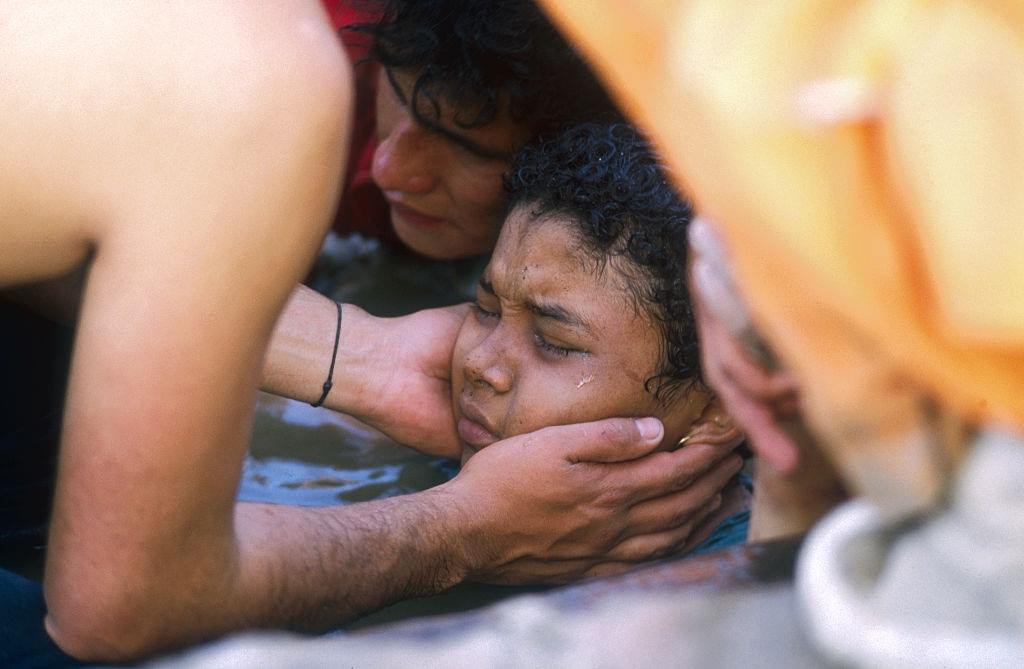
She even asked the people to take her to school because she was worried that she would be late.
#2 Rescuers administer a shot to Omayra Sánchez.
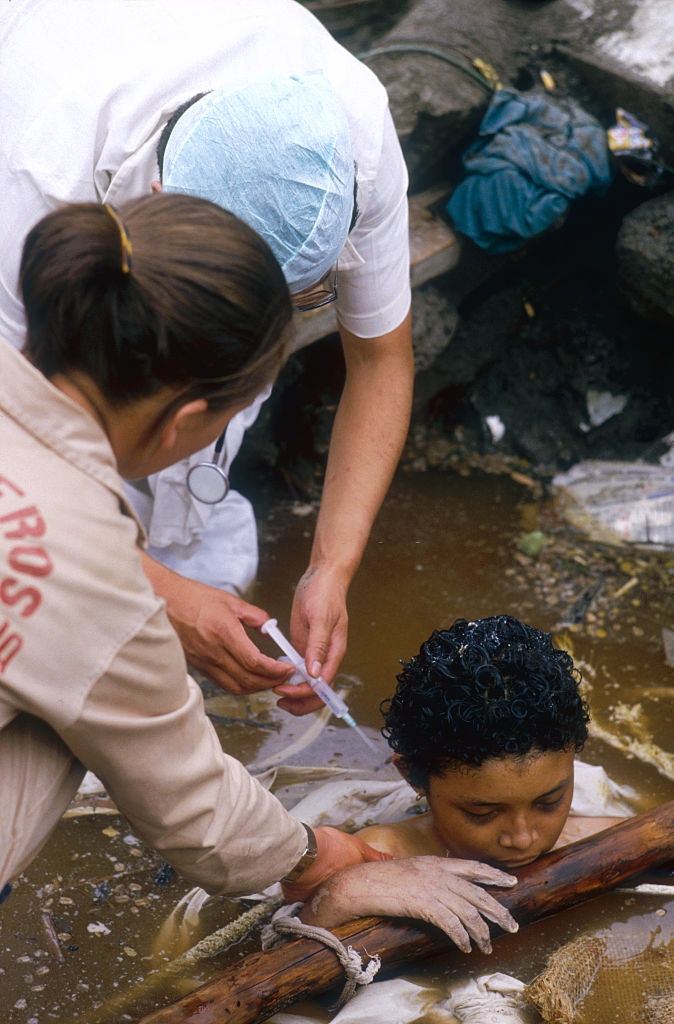
#3 A rescuer offering water to Omayra Sánchez.
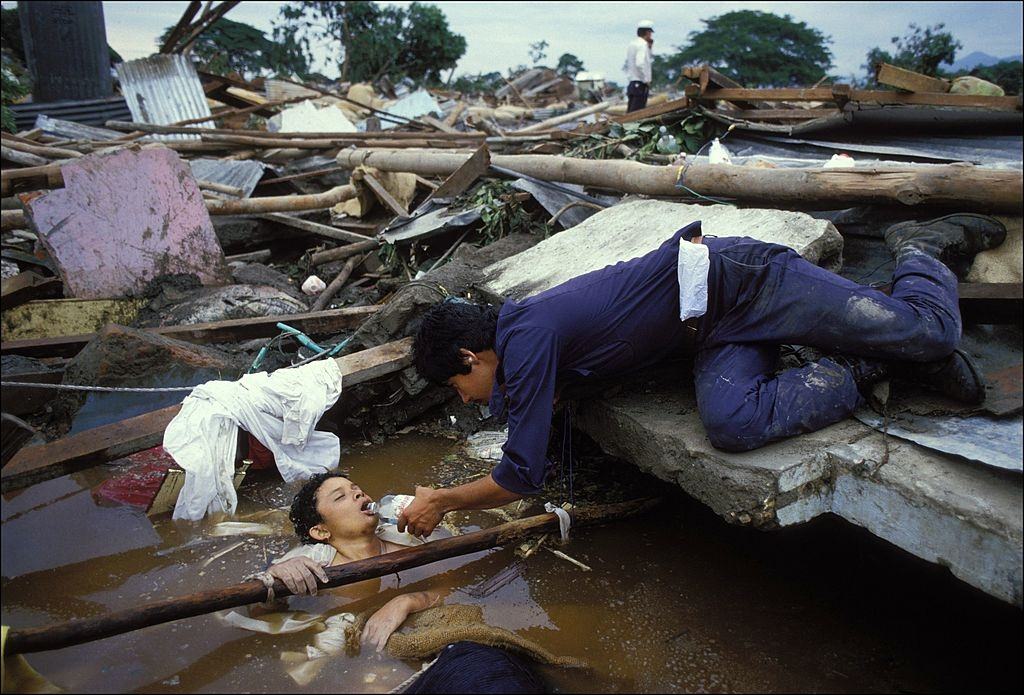
#4 A rescuer trying to pull Omayra Sánchez.
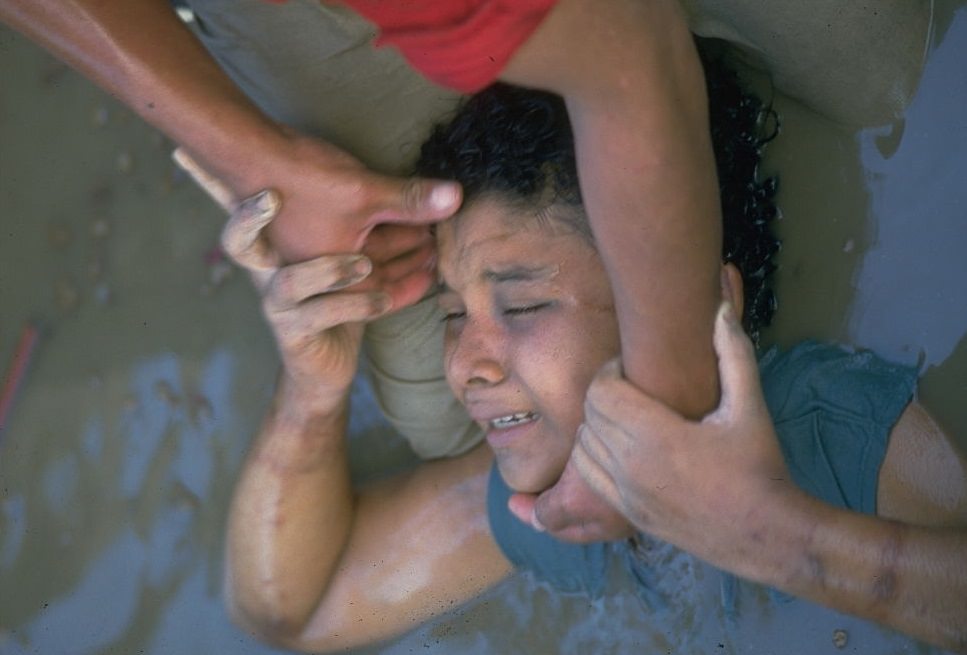
#5 Men attempt to rescue Omaira Sanchez who is trapped in debris from the eruption of Nevado del Ruiz Volcano in Armero, Columbia
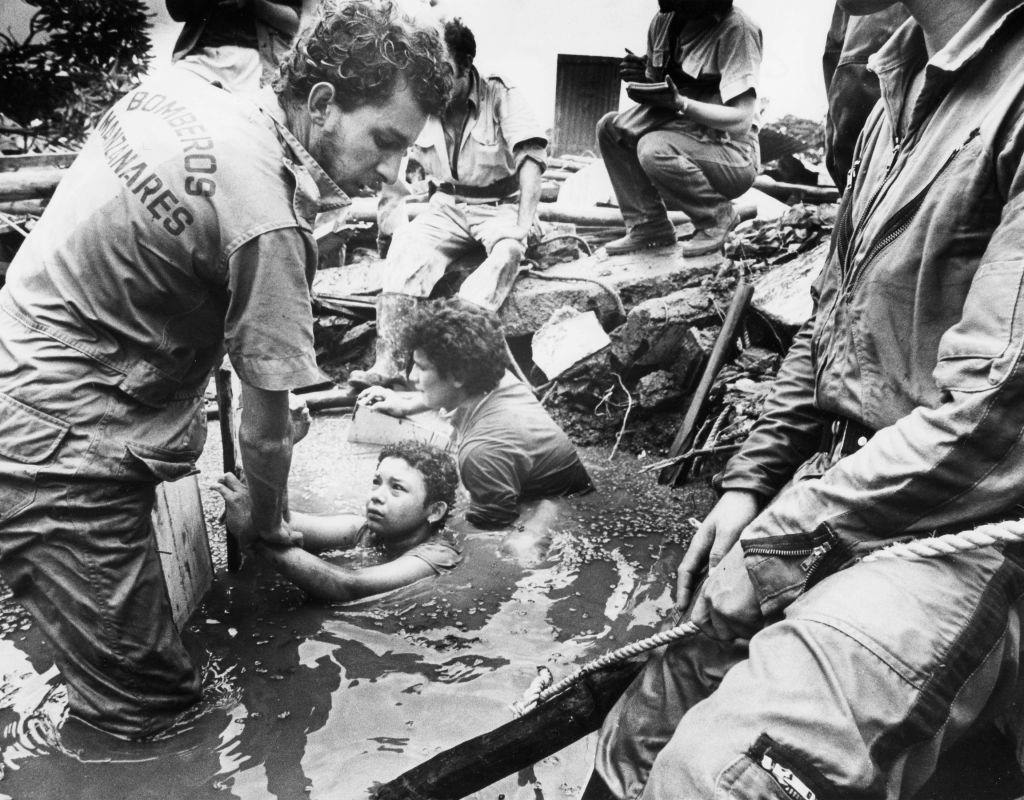
#6 Rescuers trying to pull Omayra Sánchez, but her legs were trapped a giant vat of debris and neck-deep water.
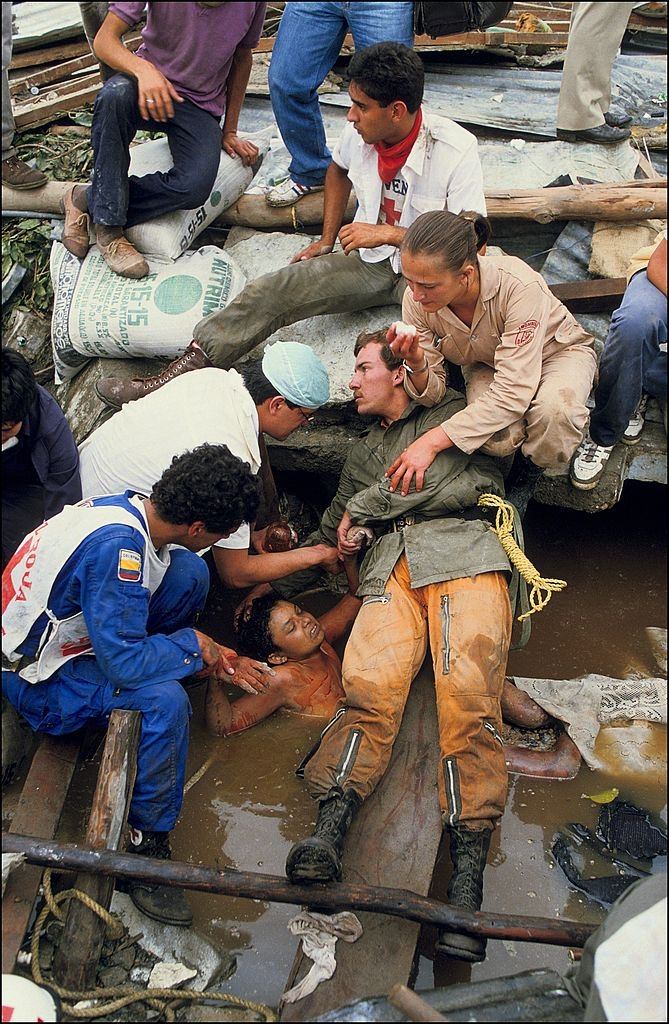
#7 Sánchez’s eyes reddened, her face swelled, and her hands whitened.
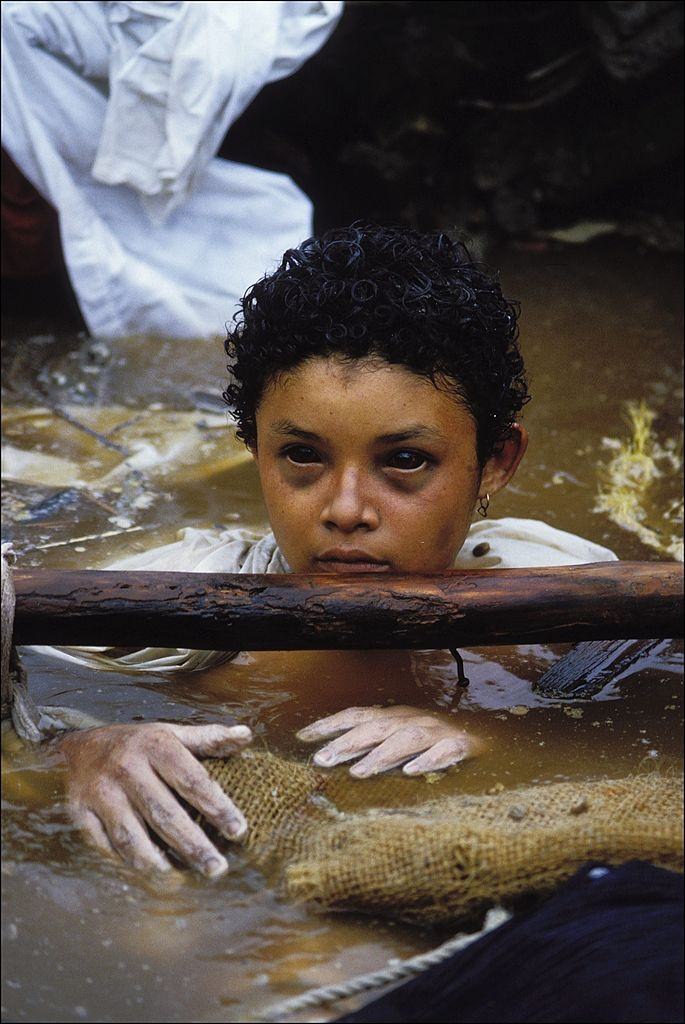
She was facing death with courage and dignity She could sense that her life was going.
#8 The deathly white hand of Omayra Sánchez.
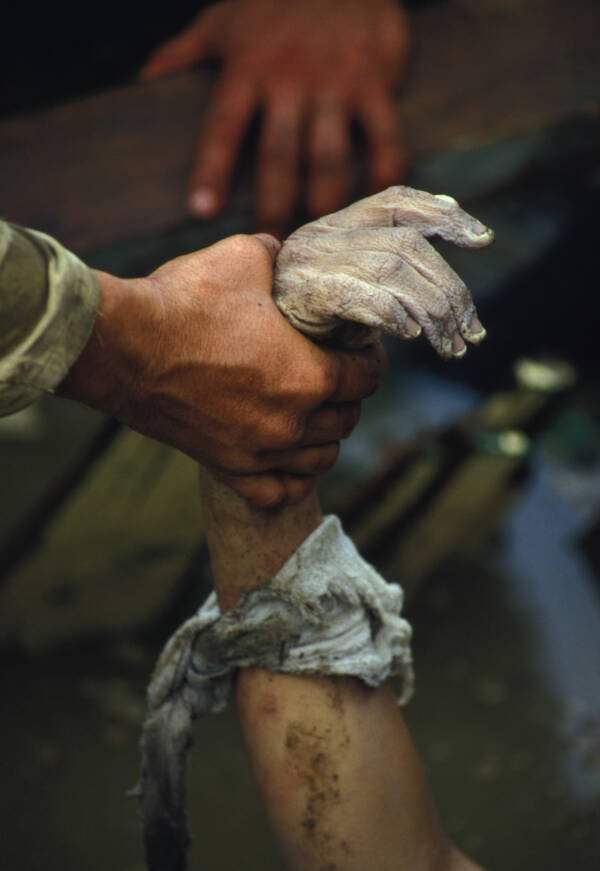
#9 A man crying after Omayra Sánchez was died.
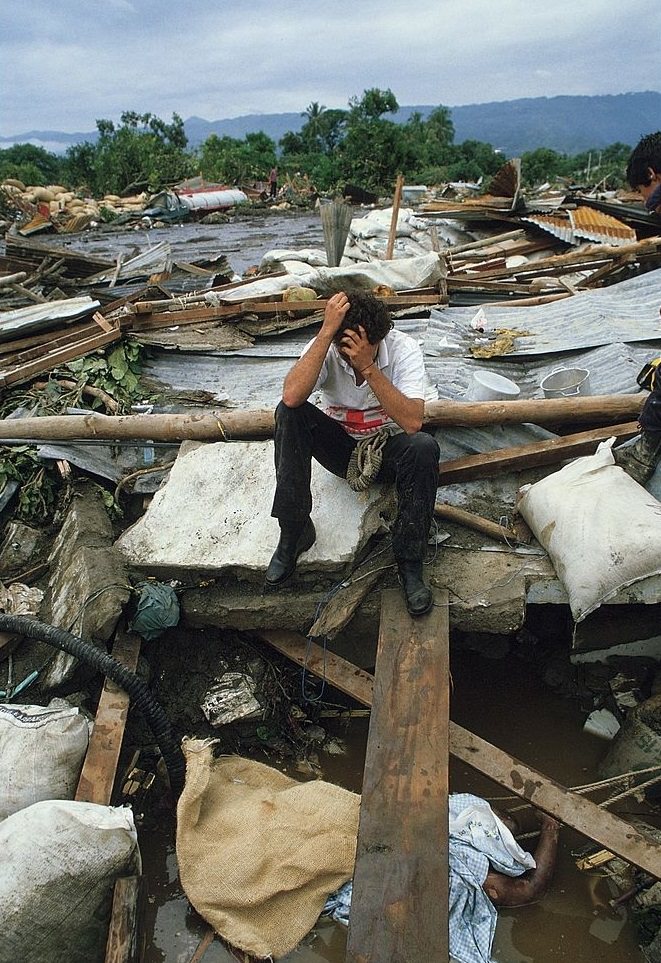
She suffered for nearly three nights (roughly 60 hours) before she died at 9:45 A.M. rom exposure, most likely from gangrene or hypothermia.
#10 Devastation on ground level, with mud covering car, body, sandbags.
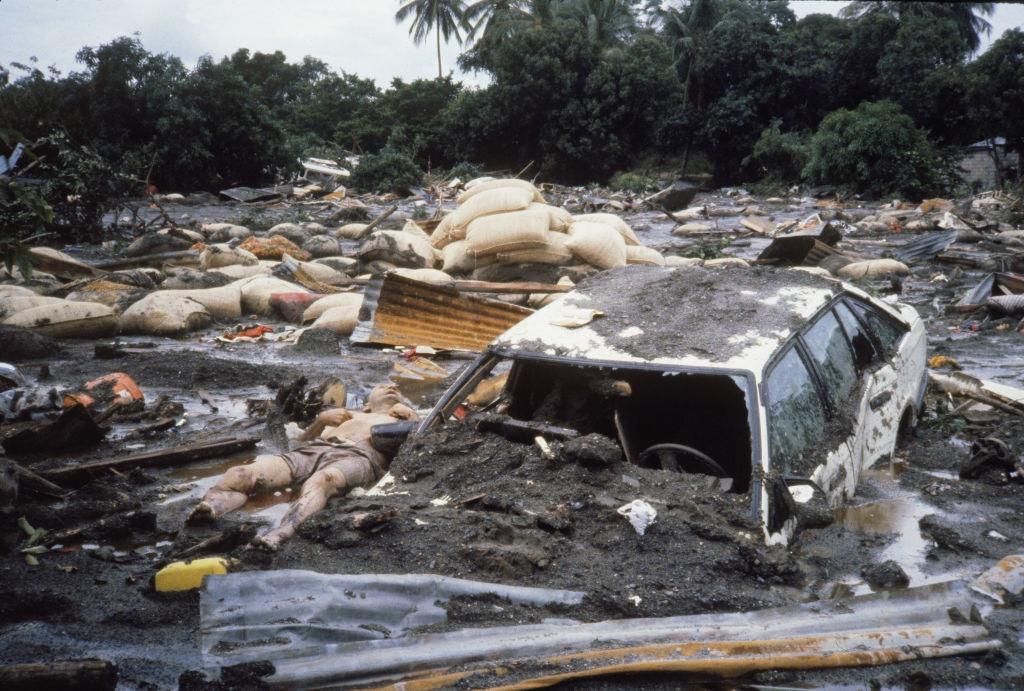
In total 23,000 people were killed and 13 villages in addition to Armero were destroyed.
#11 A lahar from the erupting Nevado del Ruiz volcano wiped out nearly everything in its path as it flowed into a valley in Colombia.
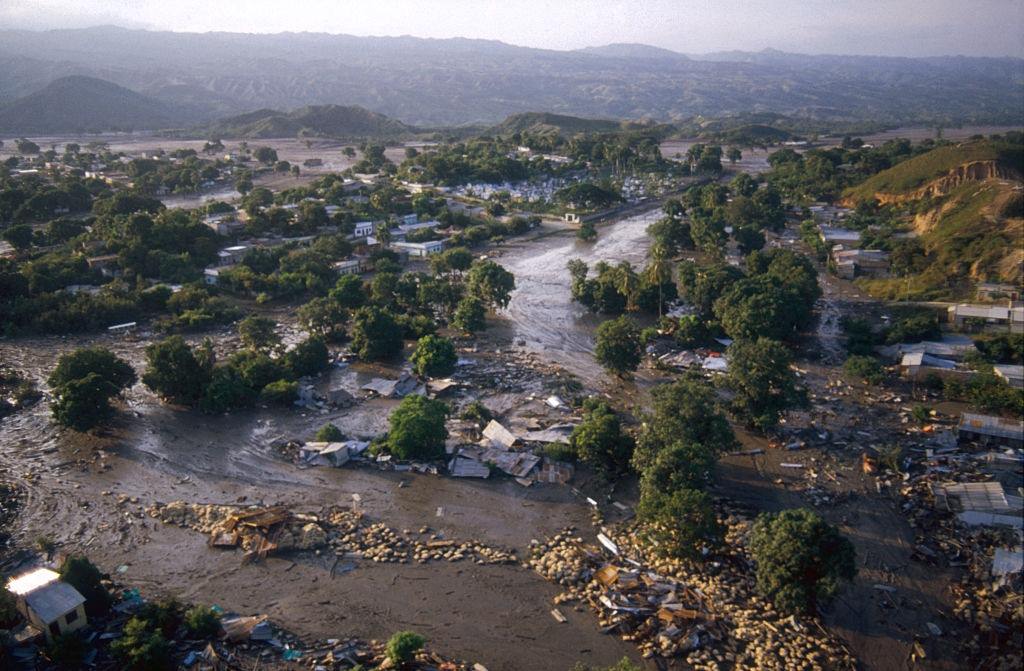



It’s a horrible situation. She could not amputate her legs safely, so the doctors decided it was the most humane thing to let her die. I could not imagine going through that alone, so she was lucky to have people by her side throughout.
It would have been more humane to give her an overdose of morphine than to let her suffer for three days.
They didn’t know if/when relief would arrive. With what they had on hand, they could not free her, but can you imagine what would have happened if they decided to euthanize her and then an hour later, supplies and personnel arrived that could have saved her life? Since she was not mortally wounded, killing her when she had a chance was not easy to make but is very easy to judge retrospectively.
I think that’s fair. According to what I’ve read, the authorities were woefully unprepared, and the rescue effort was at best haphazard. The little girl had no family to comfort her because her mother was away from home, and her father and aunt both perished in the lahar that trapped her. Better than being alone and afraid, I suppose. Still not good.
The government failed terribly. This is terrible for that girl and the first responders who had to sit and wait for help that never came.
I remember seeing that picture of her with black eyes hanging over a stick. I never knew her whole story. I can’t imagine going through such a long experience of suffering.
Imagine the mud as sinking sand; it created a suction when she was trying to free herself. Her legs were bent underneath the doorway to the house (her aunt’s body was trapped beneath her too-horrific). Her legs were bent, so they couldn’t just pull her out, but the conditions were too dirty for them to attempt an amputation.
There are people who lose limbs in accidents and the conditions are dirty. Why, please I wish someone would explain, why couldn’t they sever her legs quick, pull her out and then rush her to a trauma tent for cleaning and surgery. Maybe I don’t understand well enough. Just seems a 10% chance is better than 0%.
I’ve seen the photos of this girl but never heard the story behind it. It’s so sad that I didn’t realize the whole story behind it. I’m still unsure why they didn’t just dig a huge hole next to her and try to free her.
When they moved stuff, it caused the water around her to fill up faster.
It is difficult to get equipment to the right place in time in many natural disasters. I don’t know if that was the case here, but it’s possible.
Poor child, we would never let a dog suffer like that for so long; they would have put it down right away. But we stood by and watched as she died from exposure.
Her injuries were not fatal. She died because the proper relief equipment was not available in time. When a truck or helicopter could arrive at any minute with life-saving equipment, would you be so quick to end her suffering if you were there? Would you be able to live with yourself if it had arrived after you had decided to kill her? Looking back, it’s easy to judge.
Third world countries exist, whether you believe it or not. They lacked the proper equipment/resources/infrastructure to reach this rural town. The national guard couldn’t just fly over and rescue someone as it did somewhere in Kansas.
Of course, it would be hard to euthanize a conscious, talking little girl trapped in a situation that is not actively dangerous. It was near impossible to get her out, but it also didn’t seem hopeless.